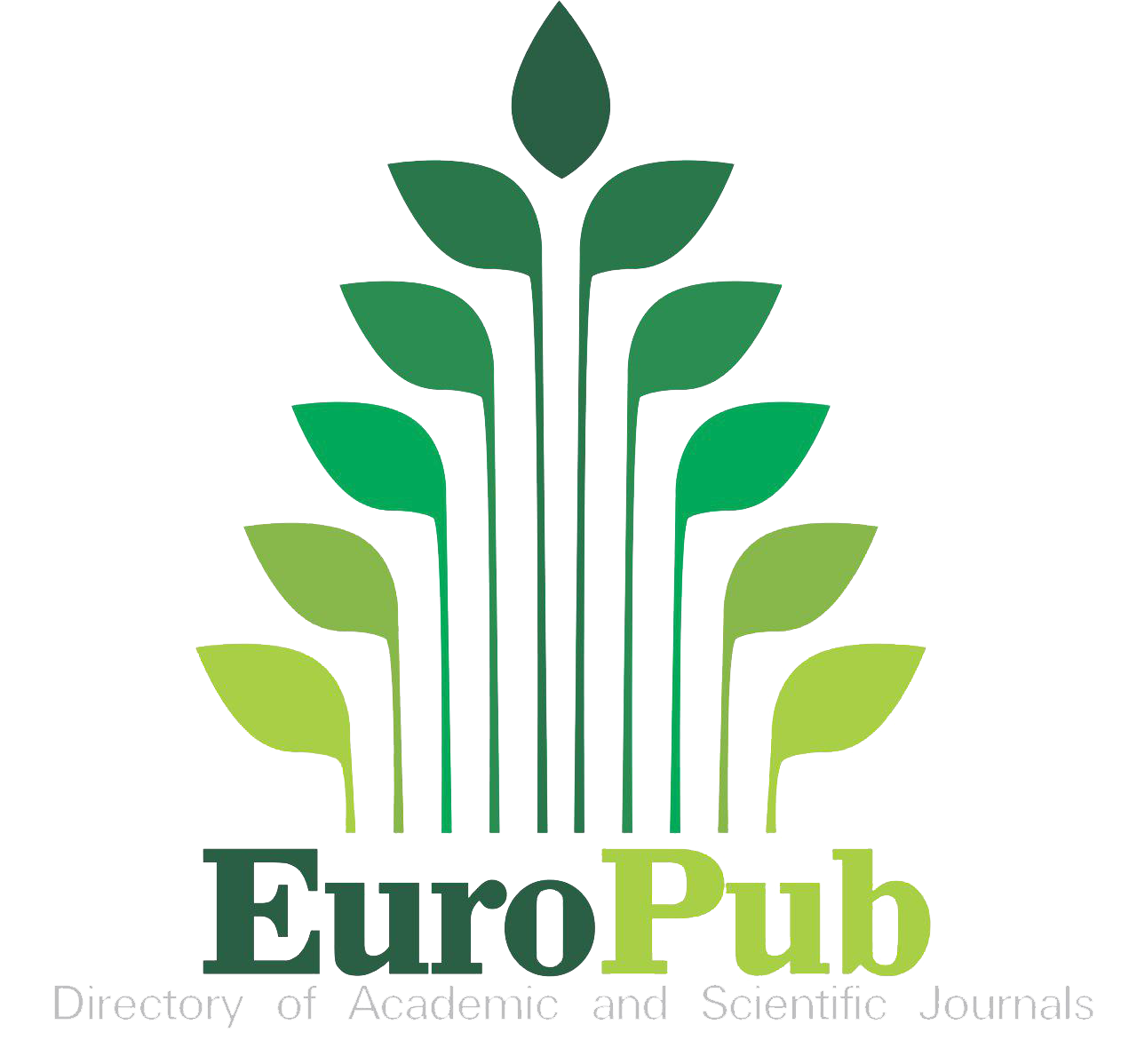Synthesis, Characterisation and Comparative Study of Hydrogel and Nanogels of Psyllium
DOI:
https://doi.org/10.54536/ajise.v2i1.1289Keywords:
Hydrogel, Nanogel, Psyllium, SwellingAbstract
Natural polysaccharides are being explored as the matrices for attaining speciality materials for pharmaceutical, medicinal and environmental applications via chemical modification such as grafting. Psyllium polysaccharide-based hydrogels and nanogels have potential biomedical and water purification applications due to their advantageous properties such as stimulus responsiveness, biocompatibility, target drug delivery and stability. The present study aims to synthesise hydrogel and nanogels of psyllium and attain comparative data for the two to undermine their potential applications. Psyllium– cl –N,N–MBAm–poly(AAm) hydrogel (Psy-MBAm-AAm – hg) and Psyllium– cl –N,N–MBAm–poly(AAm) nanogel (Psy-MBAm-AAm – ng) were synthesised by grafting acrylamide (AAm) onto psyllium using ammonium persulphate (APS) as a free radical initiator in a redox system where N, N-methylene bisacrylamide acted as a crosslinker. The comparative study of synthesised gels was carried out by studying swelling characteristics at acidic and basic pH (7 and 4) and at varied temperatures for both matrices. The synthesised hydrogel and nanogels were subjected to characterisation by Fourier transform infrared spectroscopy (FTIR), Field Emission Scanning Electron Microscopy (FESEM), and Zeta Potential Analysis to get evidence for successful synthesis and nanogel formation.
Downloads
References
Ahmad, N., Ahmad, M. M., Alruwaili, N. K., Alrowaili, Z. A., Alomar, F. A., Akhtar, S., ... & Elkomy, M. H. (2021). Antibiotic-loaded psyllium husk hemicellulose and gelatin-based polymeric films for wound dressing application. Pharmaceutics, 13(2), 236. https://doi.org/10.3390/pharmaceutics13020236
Cui, S. W., Wu, Y., & Ding, H. (2013). The range of dietary fibre ingredients and a comparison of their technical functionality. Fibre-rich and wholegrain foods: improving quality, 96-119. https://doi.org/10.1533/9780857095787.1.96
Das, N., Ojha, N., & Mandal, S. K. (2021). Wastewater treatment using plant-derived bioflocculants: green chemistry approach for safe environment. Water Science and Technology, 83(8), 1797-1812. https://doi.org/10.2166/wst.2021.100
Druzian, S. P., Zanatta, N. P., Borchardt, R. K., Côrtes, L. N., Streit, A. F., Severo, E. C., ... & Dotto, G. L. (2021). Chitin-psyllium based aerogel for the efficient removal of crystal violet from aqueous solutions. International Journal of Biological Macromolecules, 179, 366-376. https://doi.org/10.1016/j.ijbiomac.2021.02.179
Everson, G. T., Daggy, B. P., McKinley, C., & Story, J. A. (1992). Effects of psyllium hydrophilic mucilloid on LDL-cholesterol and bile acid synthesis in hypercholesterolemic men. Journal of lipid research, 33(8), 1183-1192. https://doi.org/10.1016/S0022-2275(20)40770-9
Jovanovski, E., Yashpal, S., Komishon, A., Zurbau, A., Blanco Mejia, S., Ho, H. V. T., ... & Vuksan, V. (2018). Effect of psyllium (Plantago ovata) fiber on LDL cholesterol and alternative lipid targets, non-HDL cholesterol and apolipoprotein B: a systematic review and meta-analysis of randomized controlled trials. The American Journal of Clinical Nutrition, 108(5), 922-932. https://doi.org/10.1093/ajcn/nqy115
Kotta, S., Aldawsari, H. M., Badr-Eldin, S. M., Nair, A. B., & Yt, K. (2022). Progress in Polymeric Micelles for Drug Delivery Applications. Pharmaceutics, 14(8), 1636. https://doi.org/10.3390/pharmaceutics14081636
Kumar, D., Pandey, J., Khan, N., Kumar, P., & Kundu, P. P. (2019). Synthesize and characterization of binary grafted psyllium for removing toxic mercury (II) ions from aqueous solution. Materials Science and Engineering: C, 104, 109900. https://doi.org/10.1016/j.msec.2019.109900
Li, Q., Wang, S., Jin, X., Huang, C., & Xiang, Z. (2020). The application of polysaccharides and their derivatives in pigment, barrier, and functional paper coatings. Polymers, 12(8), 1837. https://doi.org/10.3390/polym12081837
Masood, R., & Miraftab, M. (2010). Psyllium: current and future applications. In Medical and Healthcare Textiles, 244-253. Woodhead Publishing. https://doi.org/10.1533/9780857090348.244
Mishra, S., Sinha, S., Dey, K. P., & Sen, G. (2014). Synthesis, characterization and applications of polymethylmethacrylate grafted psyllium as flocculant. Carbohydrate polymers, 99, 462-468. https://doi.org/10.1016/j.carbpol.2013.08.047
Poddar, S., Agarwal, P. S., Sahi, A. K., Varshney, N., Vajanthri, K. Y., & Mahto, S. K. (2021). Fabrication and characterization of electrospun psyllium husk‐based nanofibers for tissue regeneration. Journal of Applied Polymer Science, 138(24), 50569. https://doi.org/10.1002/app.50569
Singh, B., & Chauhan, N. (2009). Modification of psyllium polysaccharides for use in oral insulin delivery. Food Hydrocolloids, 23(3), 928-935. https://doi.org/10.1016/j.foodhyd.2008.06.004
Singh, B., Chauhan, G. S., Bhatt, S. S., & Kumar, K. (2006). Metal ion sorption and swelling studies of psyllium and acrylic acid based hydrogels. Carbohydrate polymers, 64(1), 50-56. https://doi.org/10.1016/j.carbpol.2005.10.022
Singh, B., Chauhan, G. S., Kumar, S., & Chauhan, N. (2007). Synthesis, characterization and swelling responses of pH sensitive psyllium and polyacrylamide based hydrogels for the use in drug delivery (I). Carbohydrate Polymers, 67(2), 190-200. https://doi.org/10.1016/j.carbpol.2006.05.006
Singh, B., Sharma, N., & Chauhan, N. (2007). Synthesis, characterization and swelling studies of pH responsive
psyllium and methacrylamide based hydrogels for the use in colon specific drug delivery. Carbohydrate polymers, 69(4), 631-643. https://doi.org/10.1016/j.carbpol.2007.01.020
Singh, B., Sharma, V., Kumar, R., & Mohan, M. (2022). Development of dietary fiber psyllium based hydrogel
for use in drug delivery applications. Food Hydrocolloids for Health, 2, 100059. https://doi.org/10.1016/j.fhfh.2022.100059
Singh, J., Kumar, S., & Sharma, S. (2022). Biopolymer in Wastewater Treatment. In Biopolymers Springer, Cham. 323-351. https://doi.org/10.1007/978-3-030-98392-5_15
Thakur, V. K., & Thakur, M. K. (2014). Recent trends in hydrogels based on psyllium polysaccharide: a review. Journal of Cleaner Production, 82, 1-15. https://doi.org/10.1016/j.jclepro.2014.06.066
Uehleke, B., Ortiz, M., & Stange, R. (2008). Cholesterol reduction using psyllium husks–do gastrointestinal adverse effects limit compliance? Results of a specific observational study. Phytomedicine, 15(3), 153-159. https://doi.org/10.1016/j.phymed.2007.11.024
Downloads
Published
How to Cite
Issue
Section
License
Copyright (c) 2023 Suman Kumar, Rohini Dharela, Ghanshyam S. Chauhan

This work is licensed under a Creative Commons Attribution 4.0 International License.







